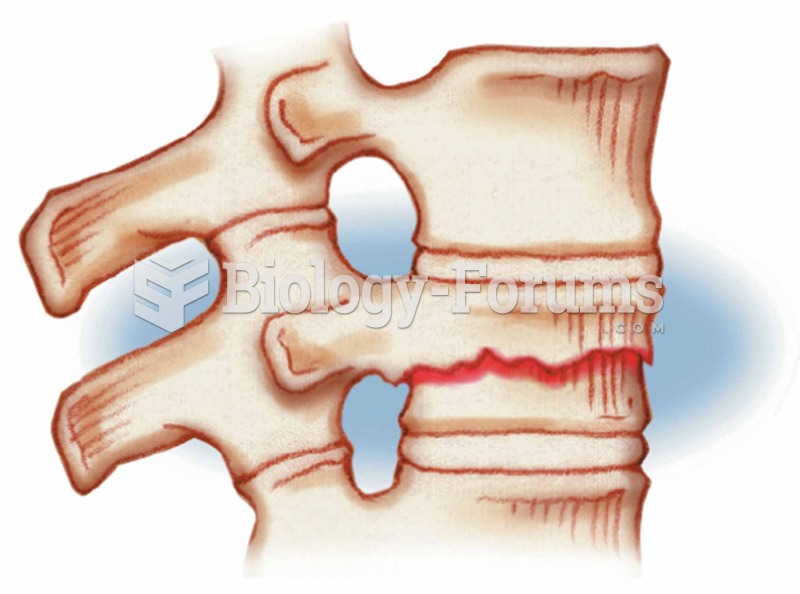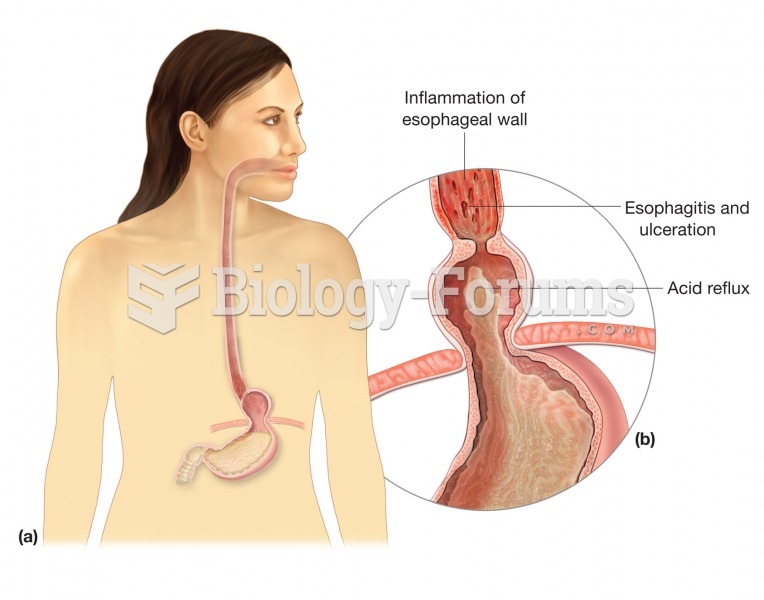|
|
|
There are more sensory neurons in the tongue than in any other part of the body.
The oldest recorded age was 122. Madame Jeanne Calment was born in France in 1875 and died in 1997. She was a vegetarian and loved olive oil, port wine, and chocolate.
More than nineteen million Americans carry the factor V gene that causes blood clots, pulmonary embolism, and heart disease.
All adverse reactions are commonly charted in red ink in the patient's record and usually are noted on the front of the chart. Failure to follow correct documentation procedures may result in malpractice lawsuits.
Signs and symptoms that may signify an eye tumor include general blurred vision, bulging eye(s), double vision, a sensation of a foreign body in the eye(s), iris defects, limited ability to move the eyelid(s), limited ability to move the eye(s), pain or discomfort in or around the eyes or eyelids, red or pink eyes, white or cloud spots on the eye(s), colored spots on the eyelid(s), swelling around the eyes, swollen eyelid(s), and general vision loss.
 Compression Occurs in vertebrae subjected to extreme stresses, as when one falls and lands on his or
Compression Occurs in vertebrae subjected to extreme stresses, as when one falls and lands on his or
 Meningocele. (a) A meningocele is a herniation of the meninges, usually associated with the spinal c
Meningocele. (a) A meningocele is a herniation of the meninges, usually associated with the spinal c





